I’ve written before about the rocky intertidal as a habitat where livable space is in short supply. Even areas of apparently bare rock prove to be, upon closer inspection, “owned” by some inhabitant or inhabitants. That cleared area in the mussel bed? Look closely, and you’ll likely find an owl limpet lurking on the edge of her farm.
See?

2017-04-01
© Allison J. Gong
And of course algae are often the dominant inhabitants in the intertidal.
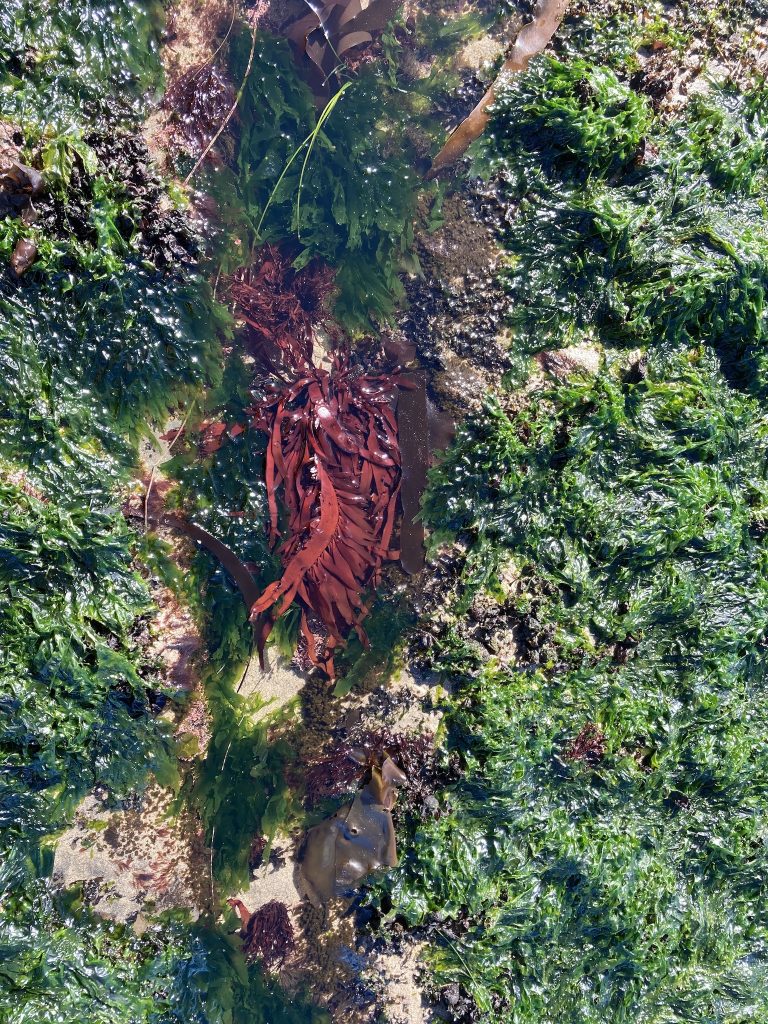
2020-06-09
© Allison J. Gong
When bare rock isn’t available, intertidal creatures need other surfaces to live on. To many small organisms, another living thing may be the ideal surface on which to make a home. For example, the beautiful red alga Microcladia coulteri is an epiphyte that grows only on other algae. Smithora naiadum is another epiphytic red alga that grows on surfgrass leaves.
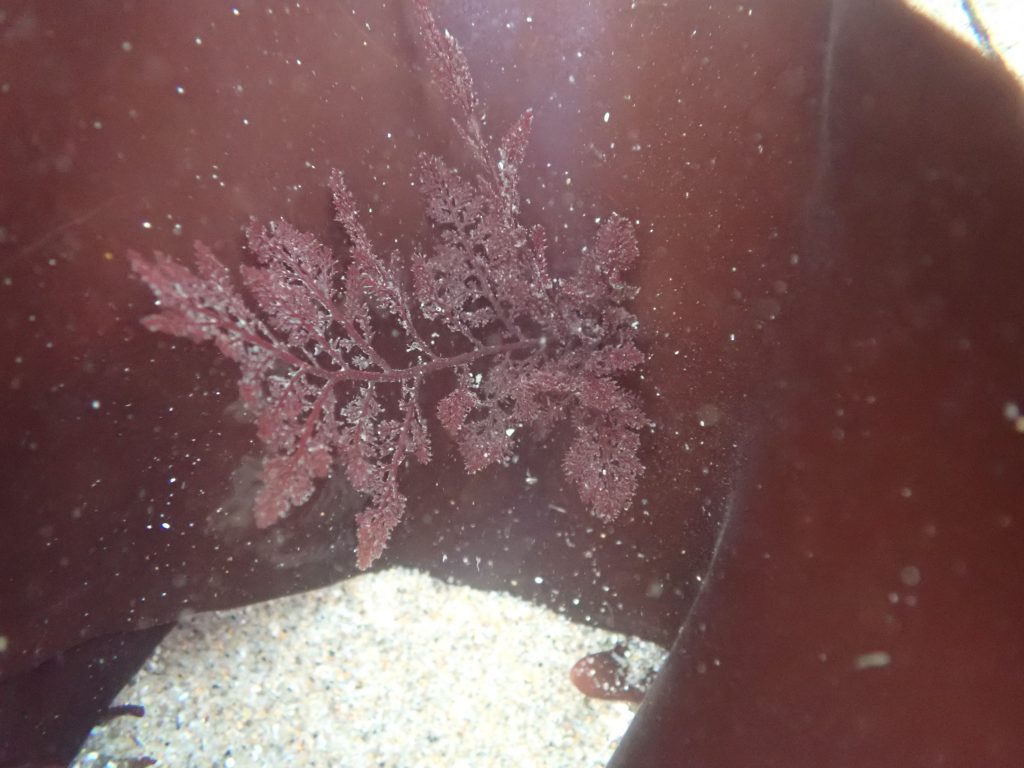
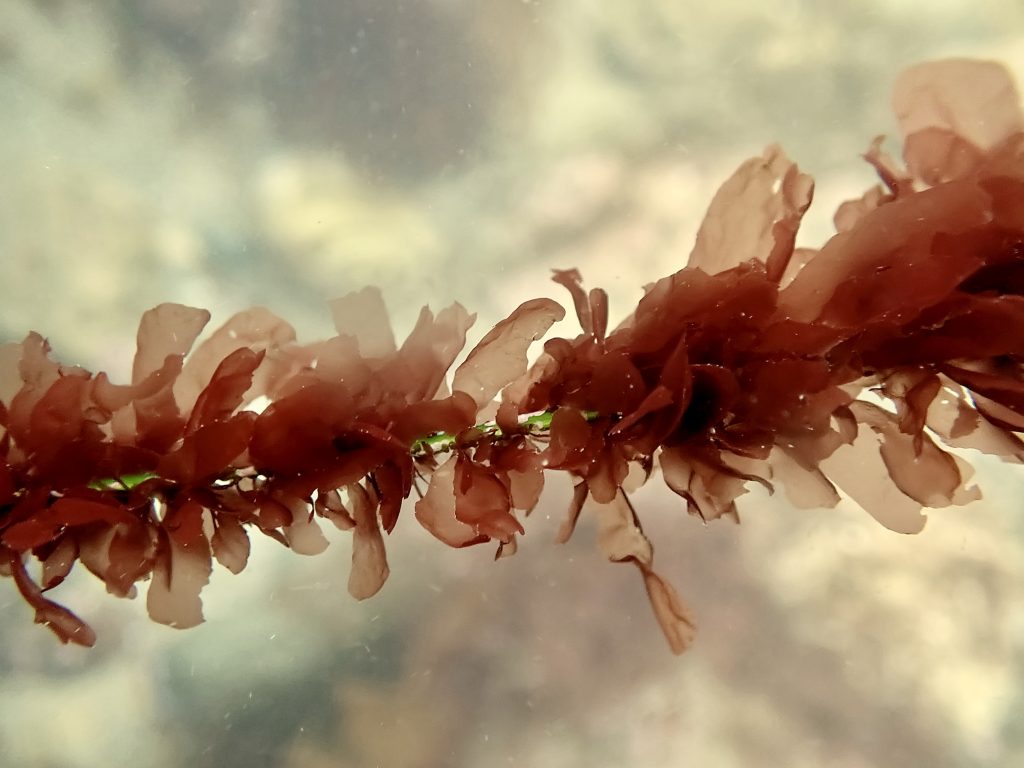
Davenport Landing
2020-07-07
We describe algae that grow on other algae (or plants) as being epiphytic (Gk: epi “on” + phyte “plant”). Using the same logic, epizooic algae are those that live on animals. In the intertidal we see both epiphytic and epizooic algae. For many of them, the epizooic lifestyle is one of opportunism–the algae may not care which animal they live on, or even whether they live on an animal or a rock. Some of the epiphytes, such as Microcladia coulteri, grow on several species of algae; I’ve seen it on a variety of other reds as well as on a brown or two (feather boa kelp, Egregia menziesii, immediately comes to mind). Smithora naiadum, on the other hand, seems to live almost exclusively on the surfgrass Phyllospadix torreyi.
Animals can also live as epiphytes. The bryozoan that I mentioned last time is an epiphyte on giant kelp. Bryozoans, of course, cannot move once established. Other animals, such as snails, can be quite mobile. But even so, some of them are restricted to certain host organisms.
The aptly called kelp limpet (Discurria insessa), lives only on the stipe of E. menziesii, the feather boa kelp. Its shell is the exact same color as the kelp where it spends its entire post-larval life. Larvae looking for a place to take up a benthic lifestyle settle preferentially on Egregia where adult limpets already live. It’s a classic case of “If my parents grew up there it’s probably a good place for me.”

2020-06-07
© Allison J. Gong
The limpets cruise up and down the stipe, grazing on both the epiphytic diatoms and the kelp itself. They can make deep scars in the stipe and even cause breakage. Which makes me wonder: What happens to the limpet if it ends up on the wrong end of the break? Does it die as the broken piece of kelp gets washed away? Can it release its hold and find another bit of Egregia to live on? Somehow I doubt it.
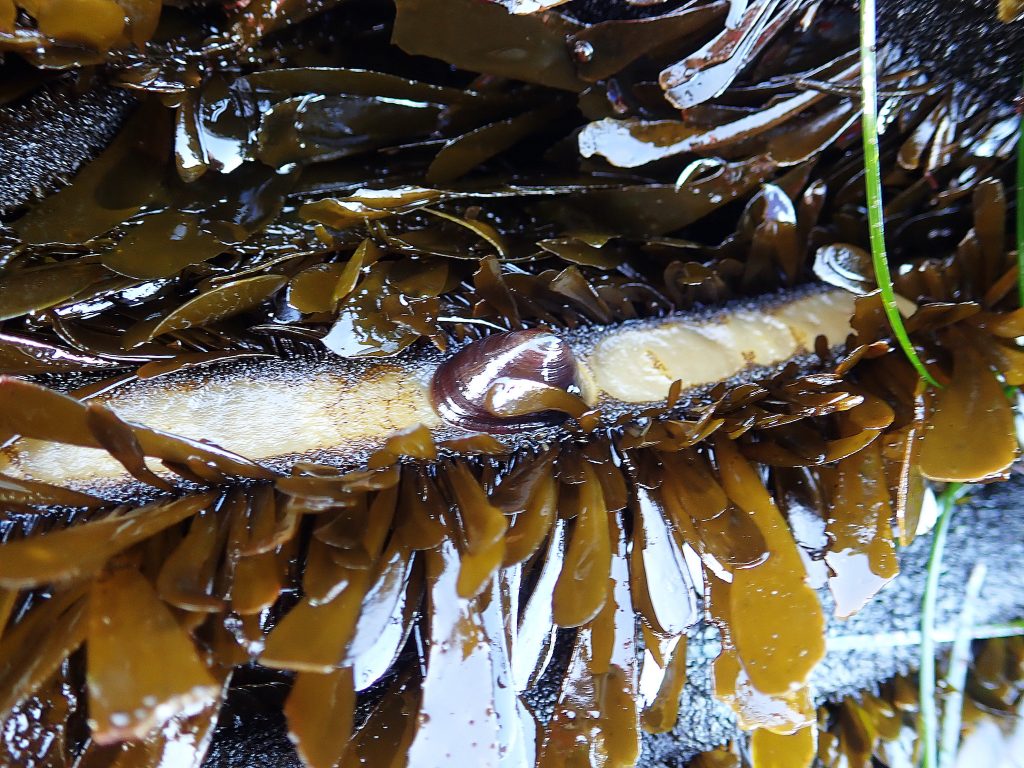
2018-05-16
© Allison J. Gong
The last time I was in the intertidal I encountered another epiphytic limpet. Like the red alga Smithora naiadum, this snail one lives on the narrow leaves of surfgrass. It’s a tiny thing, about 6 mm long, and totally easy to overlook, given all the other stuff going on in the tidepools. But here it is, Tectura paleacea. Its common name is the surfgrass limpet, which actually makes sense.

2020-07-07
© Allison J. Gong
Tectura palacea feeds on the microalgae that grow on the leaves of the surfgrass, and on the outer tissue layer of the plant. They can obviously grow no larger than their home, so they are narrow, about 3 mm wide. But they are kind of tall, although not as tall as D. insessa.
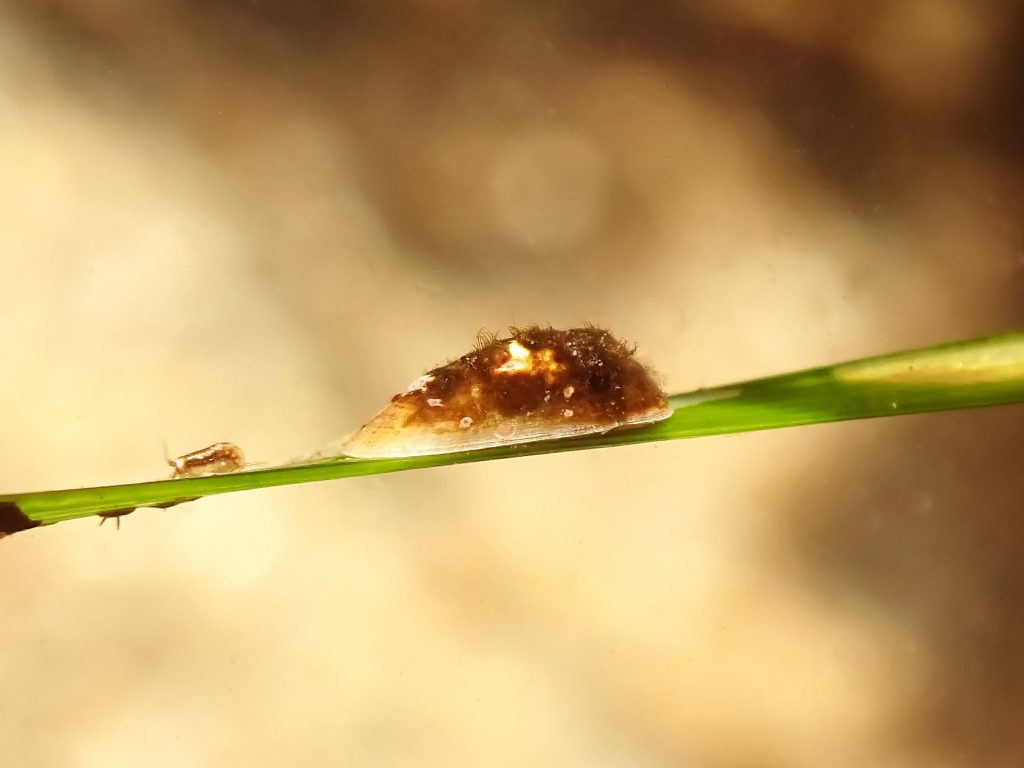
2020-07-07
© Allison J. Gong
Cute little thing, isn’t it? Tectura palacea seems to have avoided being the focus of study, as there isn’t much known about it. Ricketts, Calvin, and Hedgpeth write in Between Pacific Tides:
A variety of surfgrass (Phyllospadix) grows in this habitat on the protected outer coast; on its delicate stalks occurs a limpet, ill adapted as limpets would seem to be to such an attachment site. Even in the face of considerable surf, [Tectura] palacea, . . . , clings to its blade of surfgrass. Perhaps the feat is not as difficult as might be supposed, since the flexible grass streams out in the water, offering a minimum of resistance. . . The surfgrass provides not only a home but also food for this limpet, which feeds on the microalgae coating the blades and on the epithelial layers of the host plant. Indeed, some of the plant’s unique chemicals find their way into the limpet’s shell, where they may possibly serve to camouflage the limpet against predators such as the seastar Leptasterias hexactis, which frequents surfgrass beds and hunts by means of chemical senses.
And that seems to sum up what is known about Tectura palacea. There has been some work on its genetic population structure, but very little about the limpet’s natural history. The intertidal is full of organisms like this, which are noticed and generally known about, but not well studied. Perhaps this is where naturalists can contribute valuable information. I would be interested in knowing how closely the populations of T. palacea and Phyllospadix are linked. Does the limpet occur throughout the surfgrass’s range? Does the limpet live on both species of surfgrass on our coast? In the meantime, I’ve now got something else to keep my eye on when I get stranded on a surfgrass bed.
